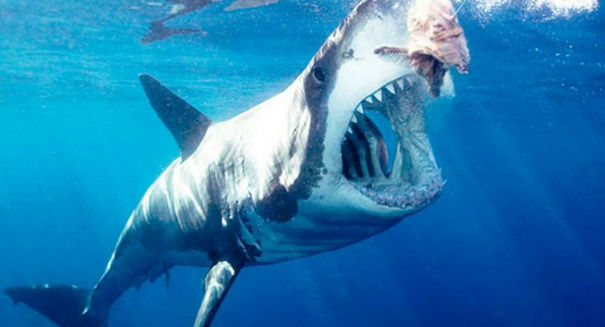
A new study discovers how sharks migrate long distances.
According to a newly published report, great white sharks may be able to swim thousands of miles due to their ability to store energy as fat and oil in their massive livers.
According to report prepared by researchers at Stanford University, the the massive marine predators pack their livers full of nutrients in an effort to make the 2,500-mile migration across the Pacific Ocean.
The researchers’ findings, published July 17 in the Proceedings of the Royal Society B, show previously unknown details regarding how great white sharks sustain themselves as they make the trip across the Pacific Ocean. According to the report, the additional of fats and oils allow the sharks to maintain buoyancy as they make the trip, saving them energy and allowing them to better navigate the dangers of long-distance journeys.
The study, initiated by a summer project of Stanford undergraduate student, shows for the first time that well-fed juvenile great white sharks at the Monterey Bay Aquarium that demonstrate a steady increase in body mass also show a steady increase in buoyancy. The body mass increase presumably is due to the addition of stored oils and nutrients in its liver, according to researchers.
“Sharks face an interesting dilemma,” said Sal Jorgensen, a research scientist at the Monterey Bay Aquarium. “They carry a huge store of energy in the form of oil in their massive livers, but they also depend on that volume of oil for buoyancy. So, if they draw on those reserves, they become heavier and heavier.”
The observations were chronicled and then compared to detail data records from electronically tagged great white sharks swimming in the eastern Pacific Ocean. Once the data was compared to observation, researchers were able to understand better that the ability of “drift diving,” a common behavior marine animals.
It remains unclear exactly how this discovery will impact scientists’ understanding of how great white sharks migrate across the 2,500 miles of ocean. Some experts have suggested it could eventually lead to better protection for the massive marine animals.
Leave a Reply